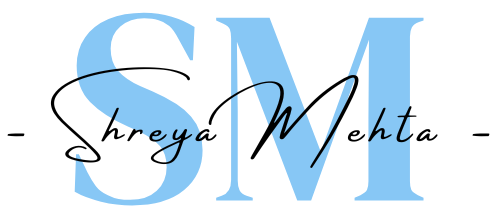
– thomas erikson
Why are some people so quiet while others talk non-stop? Why are some people always late while others are punctual? Why do you relate naturally to some people but find others irritating? Our behavioral differences come from a mix of internal factors (e.g. personality, character, temperaments) and external factors (e.g. environment and situational factors).
Our core values and attitudes affect how we behave and who we aspire to become. Our values define what we think is right or wrong (e.g. “It’s wrong to lie” or “Hard work is good”). Our attitudes are the opinions that we develop from our life experiences (e.g. “Salespeople can’t be
In any communication, what matters isn’t what you say but what the recipients hear and interpret based on their perceptions, biases and frames of reference. To interact more effectively, you need to understand
(i) your own tendencies,
(ii) others’ needs/preferences, and
(iii) how others may perceive your actions, so you can tailor your approach accordingly.
Four Behavior Types: 4 Colors: DISA
The book describes 4 behavior types—Dominance, Inducement, Submission, and Analytic (DISA)—which explain the key differences in human behavior and communication. Each behavior type is associated with a color: Red, Yellow, Green, and Blue.
Understanding the 4 Behavioral Types
Every color has its desirable and not-so-desirable traits. A quality (e.g. ambition) can be a strength in some situations and a liability in others. Different situations also call for different behaviors. So, treat the behavior patterns as tools that you can use.
It’s impossible to account for all human differences and there will always be exceptions. Moreover, we are capable of adapting our behaviors instead of rigidly sticking to 1 set of behaviors.
Only 5% of people have 1 dominant color. The majority have >1 dominant color: 80% have 2 dominant colors and 15% have 3 dominant colors. No one seems to have all 4 dominant colors.
Red = Dominance
Reds are driven, ambitious, decisive and dynamic, which makes them natural leaders. They bring energy and momentum to a team/project, are extremely competitive, work hard, and constantly challenge themselves. Reds are task-oriented and are always on the go. They’re straightforward in their communication and won’t hesitate to state their views.
However, Reds can appear aggressive, impatient, or domineering. They’re so focused on getting things done that they may bulldoze over others or leave others behind. They may also interrupt others, assert their views, or seem controlling/confrontational.
Yellow = Inducement
Yellows are positive, creative and sociable. They are social butterflies: outgoing, popular, and have a huge social network. Yellows are always full of vitality, fun, and laughter, infecting others with their positive energy. They’re also optimistic, resourceful and inspiring. Of the 4 colors, Yellows are the most animated, expressive and talkative.
However, Yellows can also come across as impulsive, attention-seeking, and overly-verbose. They are bad listeners and tend to dominate a conversation, oftening spewing ideas or opinions without prior thought or knowledge. They’re so fun-loving that they may resist rules, miss deadlines/appointments, and get carried away by excessive optimism.
Green = Stability
Greens are calm, stable, and loyal. They prefer a calm, predictable environment where they can move at a leisurely pace. They’re patient, reliable, great team players, but shy away from the spotlight. They’d avoid conflict wherever possible to maintain harmony and stability.
On the flip-side, Greens may be perceived as stubborn, indifferent or even dishonest. They don’t change their minds or take action until something feels truly “right” for them. The bigger the challenge or problem, the more they hold back. So, they can seem slow or resistant to change. To avoid conflict, Greens may sit on the fence or speak in vague terms. Even if they disagree with something, they’re unlikely to speak up, preferring to voice their displeasure privately behind your back.
Blue = Analytic
Blues are detail-oriented, analytical and perfectionists who seek to have the right answers to everything. They categorize, label and document everything, and do things in a systematic way. You’ll find them using complex spreadsheets and decision-making tools to evaluate a problem from all angles. They will check everything multiple times and insist on contingency plans before taking action. They don’t speak unnecessarily, preferring to quietly observe and analyze everything around them.
However, Blues may also be perceived as distant, pessimistic and fastidious. It can be slow and tedious to work with them. They can also appear cold and critical, always asking for evidence, and pointing out risks and problems.
“IDENTIFY YOUR COLORS AS PER YOUR DOMINANT BEHAVIORAL PERSONALITY”
Putting it ALL Together
As you can see, there’s no perfect behavior type. Each color has its strengths and weaknesses. Any quality can backfire if it’s applied in the wrong situation or if it’s taken to an extreme. Moreover, most people have >1 dominant color and may exhibit different traits under different circumstances.
Becoming a More Effective Communicator
Now that you know about each of the 4 profiles, you can become more aware of your own tendencies and learn to interact with other people more effectively. A large portion of Thomas Erikson’s book is devoted to real-life application tips.
- How to recognize and respond to each color type via written communication and body language;
- How to adapt to people who’re not like you;
- How to manage collaboration and group dynamics involving different colors; and
- Understand what angers or stresses out each color type, and what you can do about it.
“Communication happens on the listener’s terms…Everything you say to a person is filtered through his frames of reference, biases, and preconceived ideas.”

